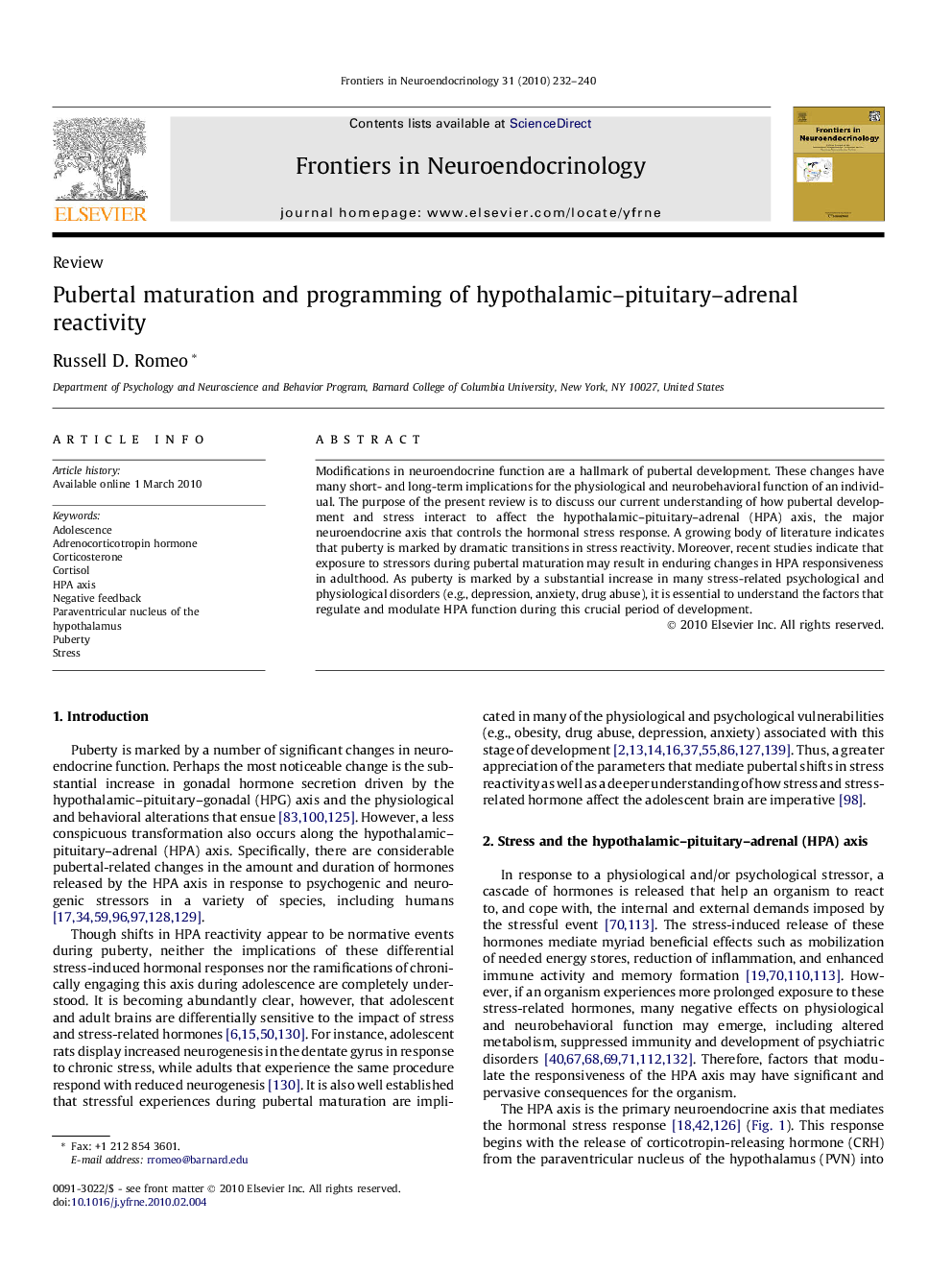| Article ID | Journal | Published Year | Pages | File Type |
|---|---|---|---|---|
| 2799469 | Frontiers in Neuroendocrinology | 2010 | 9 Pages |
Modifications in neuroendocrine function are a hallmark of pubertal development. These changes have many short- and long-term implications for the physiological and neurobehavioral function of an individual. The purpose of the present review is to discuss our current understanding of how pubertal development and stress interact to affect the hypothalamic–pituitary–adrenal (HPA) axis, the major neuroendocrine axis that controls the hormonal stress response. A growing body of literature indicates that puberty is marked by dramatic transitions in stress reactivity. Moreover, recent studies indicate that exposure to stressors during pubertal maturation may result in enduring changes in HPA responsiveness in adulthood. As puberty is marked by a substantial increase in many stress-related psychological and physiological disorders (e.g., depression, anxiety, drug abuse), it is essential to understand the factors that regulate and modulate HPA function during this crucial period of development.
